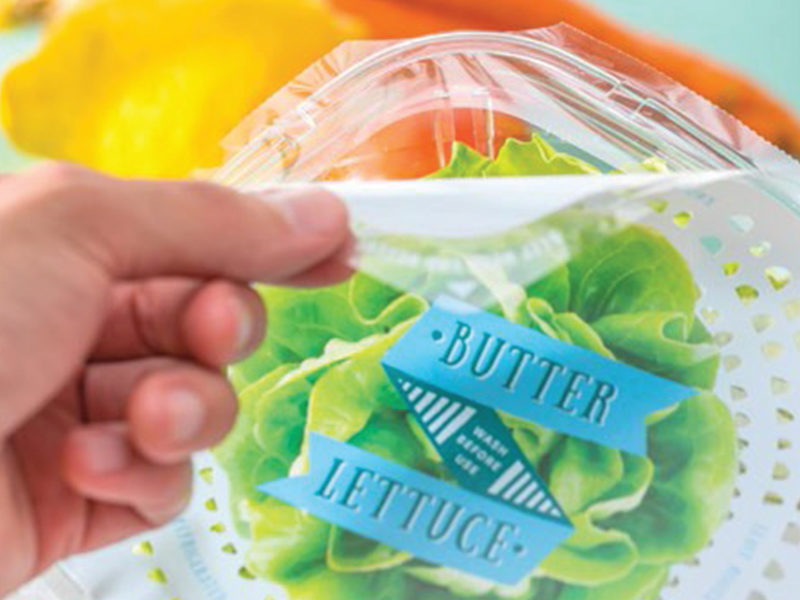
Packaging is a huge factor in fresh prepared food and its success at retail, but thanks to functional packaging, the role of packaging has grown to new heights.
Functional packaging – which includes pouches, stick packs and more – is a fast-growing category that is helping retailers and brands add value to existing products, while shifting the way consumers make decisions at the point of sale.
The added features help consumers enjoy a variety of benefits, including greater confidence in the freshness of their purchase, greater ease of use and greater convenience.
“There are high demands for fresh and convenience at the same time,” says Matthew Banghart, director of Ready. Chef. Go! and national accounts manager/foodservice for Commerce, California-based Elkay Plastics. “Those demands can be better met with the right packaging.”
Growing opportunity
Elkay Plastics has begun heavily pushing its line of Ready. Chef. Go! bags as a functional packaging option that can make life easier for both retailers and consumers.
The line offers a level of convenience that is a point of emphasis for retailers but isn’t always the easiest to provide.
“The challenge with that has always been from an execution standpoint,” Banghart says. “As much as stores talk about customer engagement and convenience, they don’t back it up with labor. There is always a shortage of labor.”
That’s where the Ready. Chef. Go! bags come into play. The bags allow consumers to cook full meals in a matter of minutes.
Retailers or commissaries can fill the bags with marinated proteins and vegetables in the bag and seal it. Consumers then take the bag home and cook it in the microwave or oven for a quick, fresh meal in minutes.
“Stores are now able to offer fully prepared, fresh and convenient meals,” Banghart says. “You can offer meals that are ready within 3 to 5 minutes in the microwave or 15 to 20 in the oven. And the success has been both at major retailers and at smaller independents.”
Retailers are able to develop a full line of meal kits and ready-to-cook meals without having to invest too much in the way of labor and materials.
“It takes a lot of time developing a program like that,” Banghart says. “We offer training and recipe development. You get a restaurant quality meal with three or four ingredients. In a production type of setting, that’s not a lot of time.”
Ulterior benefits
Functional packaging isn’t attractive to consumers and retailers simply for practical reasons. Many shoppers look for packaging that not only makes their lives easier but might be better for the environment.
Avery Dennison, based in Mentor, Ohio, rolled out a first-of-its-kind heat sealable reclosure technology in late 2018.The company says the technology significantly reduces the amount of plastic packaging required and eliminates liner waste, providing an economic, sustainable solution.
“As the popularity of functional packaging continues to grow, our flexible packaging and reclosure portfolios demonstrate how Avery Dennison is taking the lead to further improve the consumer experience – and that drives growth for converters and their customers,” says Frank Loncar, marketing director for the company.
The technology was featured in a “Change Your Horizons” zone at Avery Dennison’s Labelexpo Americas in September. The zone focused on functional packaging.
The line uses R1490, the only FDA-compliant direct food contact adhesive, while a heat-sealable film liner turns the release liner into a functional part of the final package. The heat sealable reclosure system provides direct adhesion of the entire construction to rigid containers, eliminating the need for flow wrapping and requiring significantly less plastic packaging by eliminating both liner waste and clamshell lids. This delivers a more environmentally friendly solution by significantly reducing material, particularly for produce such as tomatoes, berries or lettuce packaged in rigid plastic containers.
“Avery Dennison’s new heat seal reclosure technology is a real win for the environment and is a great addition to our ClearIntent sustainability portfolio,” says Heather Valentino, sustainability manager. “In pint containers, for example, the lid makes up 44 to 47% of the material used to form the container. This new heat sealable reclosure system uses significantly less material, opening up environmentally responsible opportunities for produce packers.”
How commissaries can benefit
Banghart says Elkay has spent the last couple years having conversations with commissaries about the setting up programs using the company’s Ready. Chef. Go! line of functional packaging.
“Smart retailers are building out their own commissaries or production facilities,” he says. “Dierbergs in St. Louis is a good example.”
Not only does a central production facility help with labor and other costs, it can also help ease interdepartmental strife.
“A commissary utilizing functional packaging like this and producing these ready-to-cook meals helps break down the silos in the store,” Banghart says. “It’s mostly meat and seafood departments that are doing these products now because those are the main ingredients. But deli people are so much better at assembling meals than a butcher, but because it’s their sales, you get into the problem of who gets the sales credit and who gets charged for labor and ingredients.”
A commissary, on the other hand, eliminates those silos and the meals are merchandised where they belong, he says, and not in the seafood or meat department.

